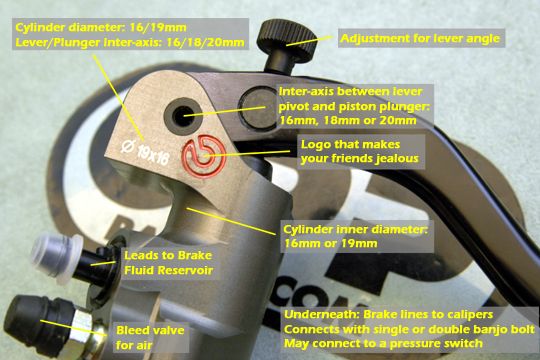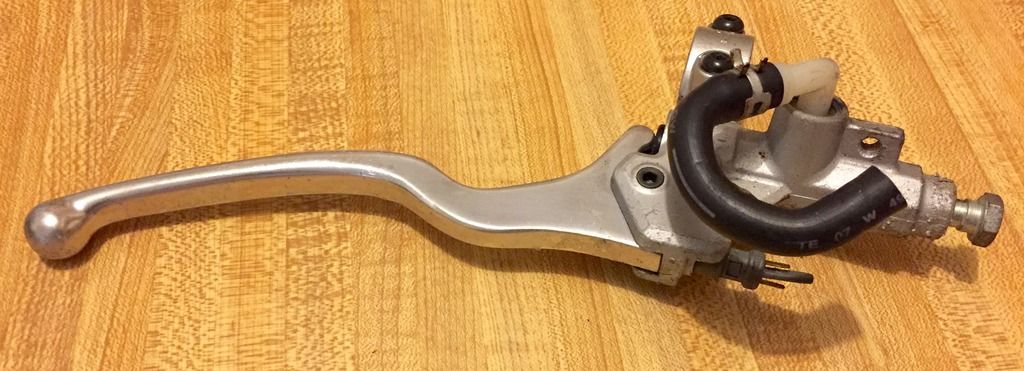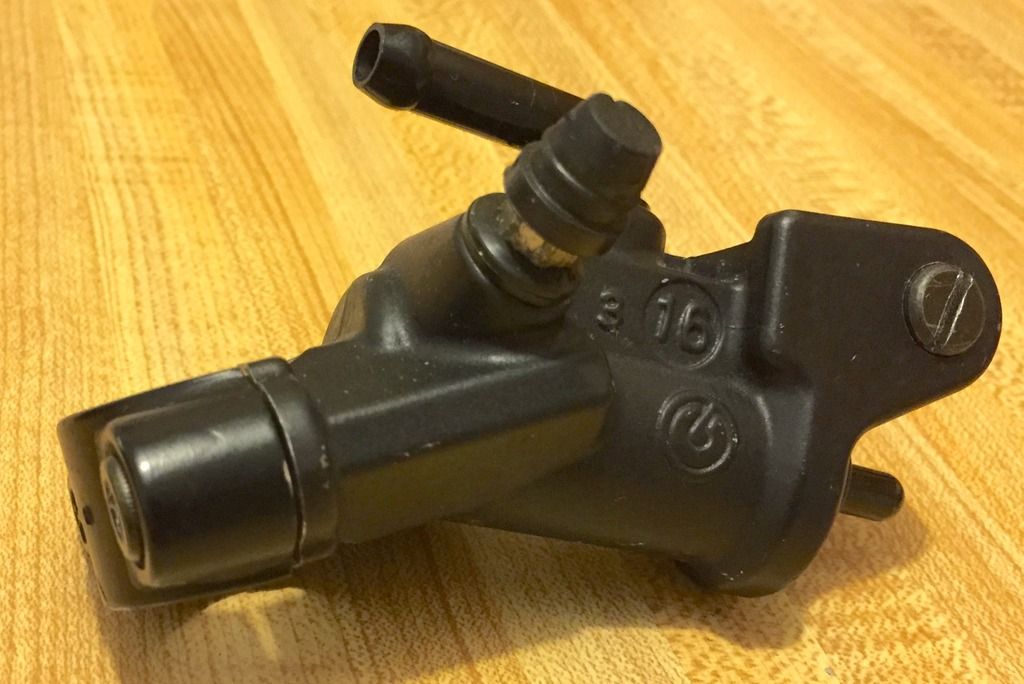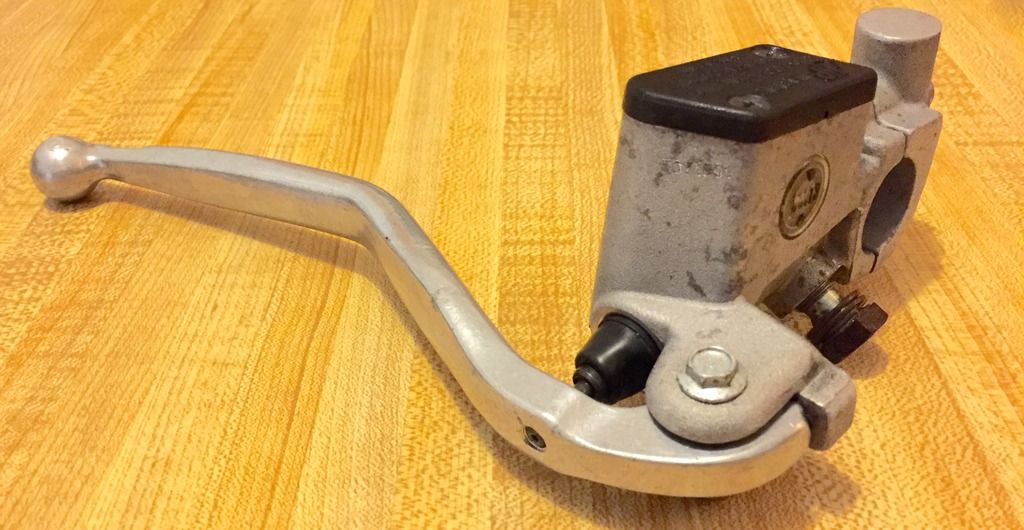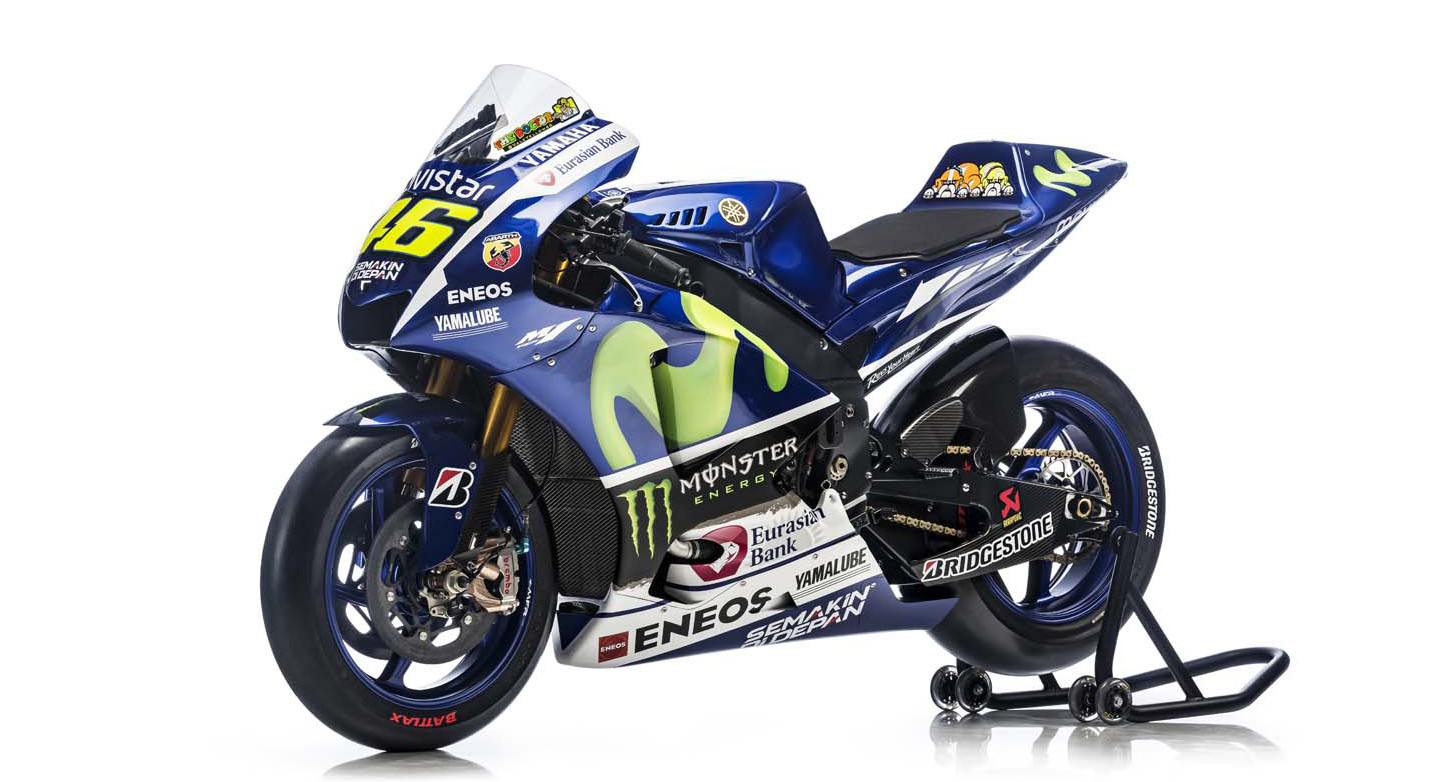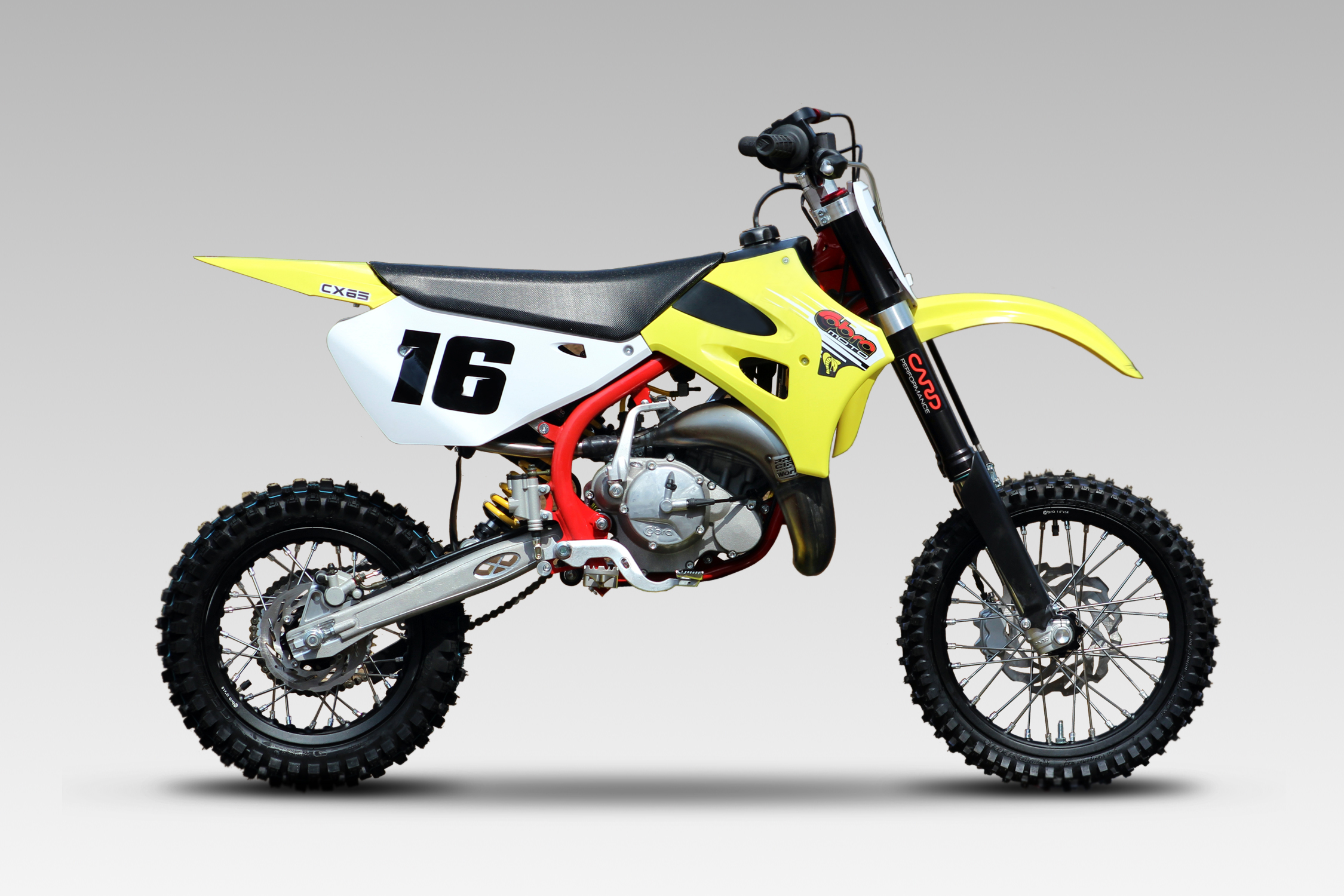ToraTora
Member
I did a little write up of Master Cylinders for the Aprilia Forum. Since the front brakes on these bikes are very similar this information could be useful for some folks over here too. If you feel compelled to tell me that your stock brakes are just fine please refrain. I don't need to hear how wonderful your experience is with the stock brakes. Some folks want something better than stock, and that's why I've bothered to share this information.

Most folks only think about what new top end to install on their bike, however there are other areas on the bike where riders should consider the big investment. One important area is brakes. On motorcycles the front brake is by far the most important. Some racers even claim that the never use the rear brake. Thus for these purposes I'm only going to speak of front systems. The main upgradable components in a brake system are the Master Cylinder, the line, the Caliper, the disc, and the pads. Some might include fluid, but if you get decent fluid you will probably be okay.
Most of these little bikes come with a two piston caliper. Some of the newer machines come with a four piston caliper, and the bikes with radial two pistons can easily be upgraded to four piston calipers. Master cylinders come in different sizes. The general thought is that a 13mm for two piston, 15/16 mm for four piston, and 19/20mm for 6+pistons.
The Derbi, and Derbi versions of these bikes come with braided lines. If you have an older RS you should upgrade your lines. As for pads there are lots of choices for upgrades. I have had very good experience with the Ferodo pads, but that would be content for another thread. Calipers can be upgraded too. For machines with the axial two piston calipers I don't have any good caliper upgrade suggestions--although I may research this is the future. For the newer Fifties with the radial two piston calipers I suggest getting the four piston caliper AJP that came stock on the Derbi 2T 125--it's probably one of the best upgrades you can make on the bike, as long as you get a decent master with which to accompany. For discs the only upgrade I've ever seen for the Derbi bikes is the Metrakit discs. Okay so lets get to the masters.
The AJP four piston caliper found on the Derbi 2T 125

The Derbis either came with an AJP axial, or on the newer ones an AJP radial. It's not a bad master, but it is an upgradable component that will yield a huge performance increase. I tried a lot of different masters with the two piston radial caliper. These include the stock, an axial Master from an Aprilia RS125, a radial from an R6, and others. On the stock radial two piston caliper the Aprilia axial master showed an improvement. The R6 was too much master--turned it into a light switch. I really couldn't recommend any of these solutions.
The Yamaha R6 radial master

I then upgraded the caliper to a 4 piston AJP. At the time I did this I had the R6 master installed. This combination was the best I had to that point, but once I installed the Brembo 16x18 radial master I found out what a nice setup these bikes could enjoy.
The Brembo 16x18 radial master
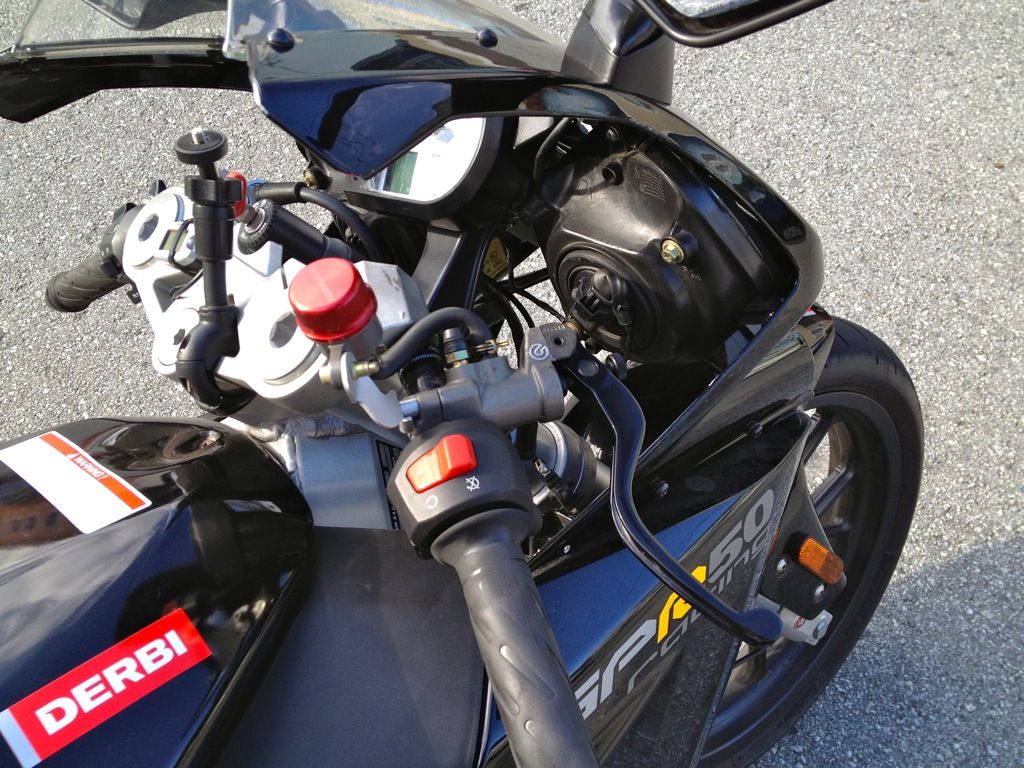
Recently I've employed the Brembo 16x18 on an older Derbi with the AJP 2 piston axial caliper. It's better than stock, but the modulation isn't nearly as nice as with the AJP four piston axial caliper. I also have an RCS15 on the way to test out with the AJP 4 piston caliper. Below I've listed some other options. Gianluca recently picked up the SXV master, and is running it on his early model RS50 with a stock caliper with good results. He states it is much improved over stock. I think he did try an R6 master, found it to be lacking in modulation.
This is far from an exhaustive list, but it should be enough to help you figure out a direction for your bike.
Alright lets get to some of the options available.
Brembo RCS15 Radial Master
Brembo makes another master called the RCS15 (they also make a 19). This is for us mortals the gold standard. Being a 15mm master is is best suited to the four piston calipers. But because it is adjustable in its cylinder displacement it could be employed on a 2 piston caliper. But for best results it should probably be employed with a 4 piston caliper. One nice feature about the RCS is that it comes with a brake light switch. You do need a special banjo bolt for it which is not included with the master. The thread pitch is 1.0mm, where most banjos on Japanese bikes are 1.25mm. Two different levers are available. Short foldable, long foldable. For these bikes get the short lever. As of this writing the best price I've seen on these is at the Power Barn $335, plus shipping.

Brembo 16x18 Radial Master
The 16x18 is quite similar in performance to the RCS15, although you cannot adjust the ratio. Therefore it must be properly matched up with the caliper. Four different levers are available. Short foldable, long foldable, short non-foldable, and long non-foldable. The 16x18 doesn't come with a brake switch, and must employ a pressure switch banjo bolt. Like the RCS the 16x18 employs the 1.0mm banjo bolt threading. The main reason to go with the 16x18 over the RCS15 in our case is pricing, but when you add the pressure switch there's really not much difference. As of this writing the best price I've seen on these is at the Power Barn $270, plus shipping. But when you consider that the RCS comes with the foldable lever the price differential drops significantly. As it jumps to $325 with the foldable lever. So for $10 more you'd be able to get the RCS.

Aprilia SXV Radial Master
This is the master cylinder that the folks at AF-1 prefer for their single caliper bikes. Banzai also likes this, and has employed it on his Derbi GPR 2T 125. It does come with a brake switch, and reservoir. AF-1 currently has these at $270. But I've seen them list this part at around $200, which it then becomes very attractive. I don't know what the specs are on it because they aren't published, but it is intended for a single caliper, so it is probably a 15/16ish piston. It does come with two clamps, one with a mirror mount, and one without.

Magura 195 Radial Master Cylinder
Magura makes a lot of cool brakes for different applications. For us the model of interest is the 195. It is available in 13mm, 16mm, and 20mm. Thus being available in a 13mm might be one of the best choices for a stock caliper on our bikes. These go for around $280. They look to be totally rebuildable with parts available. That's a big deal! The 195 comes with a brake switch, and the res is extra. The cylinder is made from forged aluminum. Speedy is running one of these on his RSKX100 with a four piston caliper with good success.
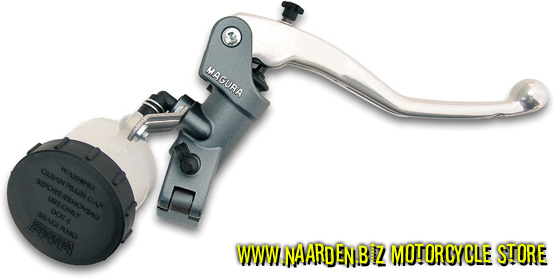

Most folks only think about what new top end to install on their bike, however there are other areas on the bike where riders should consider the big investment. One important area is brakes. On motorcycles the front brake is by far the most important. Some racers even claim that the never use the rear brake. Thus for these purposes I'm only going to speak of front systems. The main upgradable components in a brake system are the Master Cylinder, the line, the Caliper, the disc, and the pads. Some might include fluid, but if you get decent fluid you will probably be okay.
Most of these little bikes come with a two piston caliper. Some of the newer machines come with a four piston caliper, and the bikes with radial two pistons can easily be upgraded to four piston calipers. Master cylinders come in different sizes. The general thought is that a 13mm for two piston, 15/16 mm for four piston, and 19/20mm for 6+pistons.
The Derbi, and Derbi versions of these bikes come with braided lines. If you have an older RS you should upgrade your lines. As for pads there are lots of choices for upgrades. I have had very good experience with the Ferodo pads, but that would be content for another thread. Calipers can be upgraded too. For machines with the axial two piston calipers I don't have any good caliper upgrade suggestions--although I may research this is the future. For the newer Fifties with the radial two piston calipers I suggest getting the four piston caliper AJP that came stock on the Derbi 2T 125--it's probably one of the best upgrades you can make on the bike, as long as you get a decent master with which to accompany. For discs the only upgrade I've ever seen for the Derbi bikes is the Metrakit discs. Okay so lets get to the masters.
The AJP four piston caliper found on the Derbi 2T 125

The Derbis either came with an AJP axial, or on the newer ones an AJP radial. It's not a bad master, but it is an upgradable component that will yield a huge performance increase. I tried a lot of different masters with the two piston radial caliper. These include the stock, an axial Master from an Aprilia RS125, a radial from an R6, and others. On the stock radial two piston caliper the Aprilia axial master showed an improvement. The R6 was too much master--turned it into a light switch. I really couldn't recommend any of these solutions.
The Yamaha R6 radial master

I then upgraded the caliper to a 4 piston AJP. At the time I did this I had the R6 master installed. This combination was the best I had to that point, but once I installed the Brembo 16x18 radial master I found out what a nice setup these bikes could enjoy.
The Brembo 16x18 radial master

Recently I've employed the Brembo 16x18 on an older Derbi with the AJP 2 piston axial caliper. It's better than stock, but the modulation isn't nearly as nice as with the AJP four piston axial caliper. I also have an RCS15 on the way to test out with the AJP 4 piston caliper. Below I've listed some other options. Gianluca recently picked up the SXV master, and is running it on his early model RS50 with a stock caliper with good results. He states it is much improved over stock. I think he did try an R6 master, found it to be lacking in modulation.
This is far from an exhaustive list, but it should be enough to help you figure out a direction for your bike.
Alright lets get to some of the options available.
Brembo RCS15 Radial Master
Brembo makes another master called the RCS15 (they also make a 19). This is for us mortals the gold standard. Being a 15mm master is is best suited to the four piston calipers. But because it is adjustable in its cylinder displacement it could be employed on a 2 piston caliper. But for best results it should probably be employed with a 4 piston caliper. One nice feature about the RCS is that it comes with a brake light switch. You do need a special banjo bolt for it which is not included with the master. The thread pitch is 1.0mm, where most banjos on Japanese bikes are 1.25mm. Two different levers are available. Short foldable, long foldable. For these bikes get the short lever. As of this writing the best price I've seen on these is at the Power Barn $335, plus shipping.

Brembo 16x18 Radial Master
The 16x18 is quite similar in performance to the RCS15, although you cannot adjust the ratio. Therefore it must be properly matched up with the caliper. Four different levers are available. Short foldable, long foldable, short non-foldable, and long non-foldable. The 16x18 doesn't come with a brake switch, and must employ a pressure switch banjo bolt. Like the RCS the 16x18 employs the 1.0mm banjo bolt threading. The main reason to go with the 16x18 over the RCS15 in our case is pricing, but when you add the pressure switch there's really not much difference. As of this writing the best price I've seen on these is at the Power Barn $270, plus shipping. But when you consider that the RCS comes with the foldable lever the price differential drops significantly. As it jumps to $325 with the foldable lever. So for $10 more you'd be able to get the RCS.

Aprilia SXV Radial Master
This is the master cylinder that the folks at AF-1 prefer for their single caliper bikes. Banzai also likes this, and has employed it on his Derbi GPR 2T 125. It does come with a brake switch, and reservoir. AF-1 currently has these at $270. But I've seen them list this part at around $200, which it then becomes very attractive. I don't know what the specs are on it because they aren't published, but it is intended for a single caliper, so it is probably a 15/16ish piston. It does come with two clamps, one with a mirror mount, and one without.

Magura 195 Radial Master Cylinder
Magura makes a lot of cool brakes for different applications. For us the model of interest is the 195. It is available in 13mm, 16mm, and 20mm. Thus being available in a 13mm might be one of the best choices for a stock caliper on our bikes. These go for around $280. They look to be totally rebuildable with parts available. That's a big deal! The 195 comes with a brake switch, and the res is extra. The cylinder is made from forged aluminum. Speedy is running one of these on his RSKX100 with a four piston caliper with good success.







